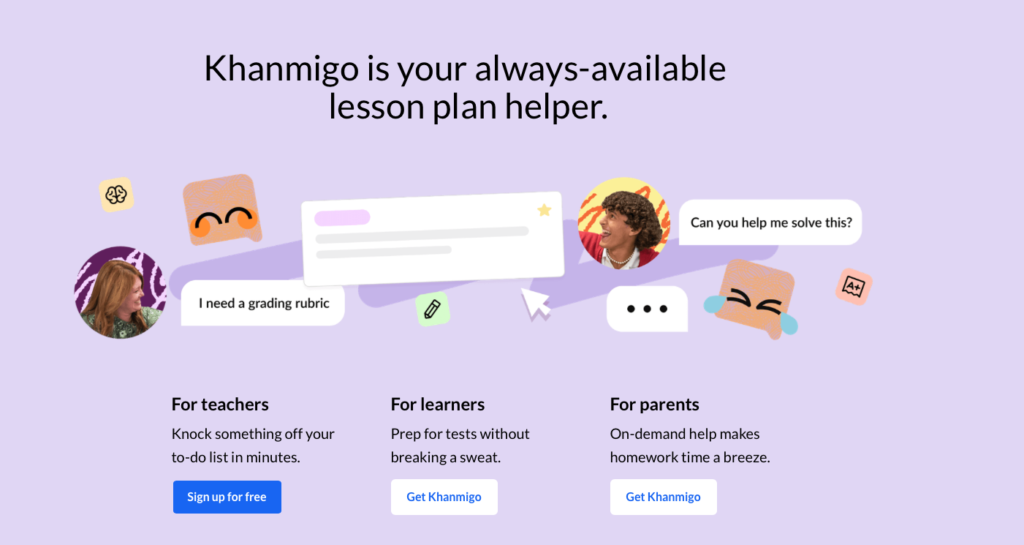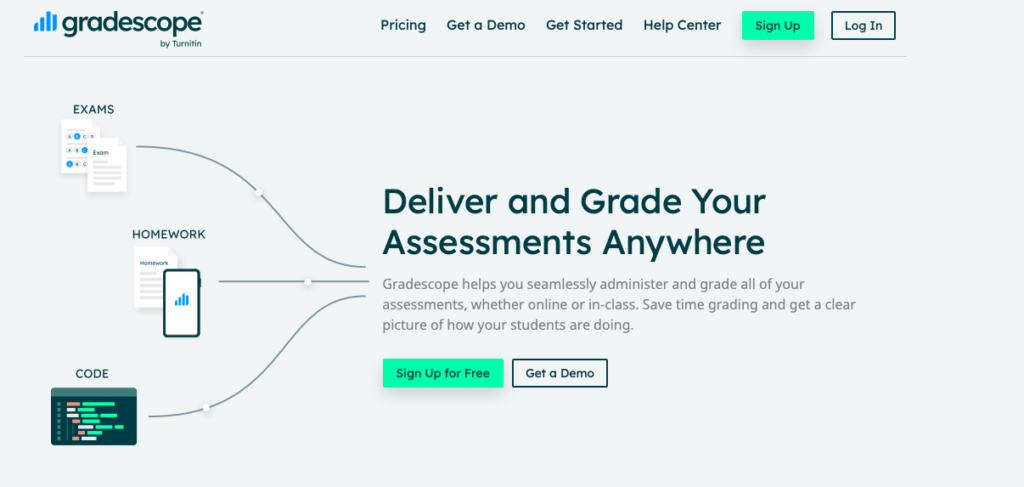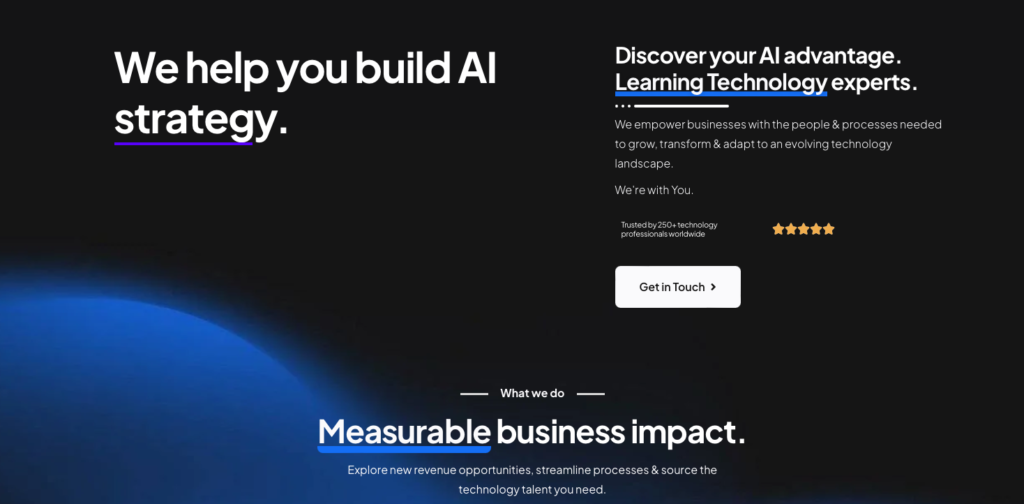Applications of AI in EdTech in 2024
How AI is shaping the EdTech & Education market in 2024 and beyond. Core applications of AI in EdTech.
Major Applications of Artificial Intelligence in EdTech

Artificial Intelligence (AI) is revolutionising the EdTech industry by enhancing learning experiences, improving administrative efficiency, and providing personalized educational pathways. The EdTech market comprises various segments, including online learning platforms, content creation tools, learning management systems, and corporate training solutions. Here we will explore the major applications of AI in these different sub-sectors, illustrating how AI is transforming the landscape of education.
We have also split our applications into Machine Learning (ML) & Generative AI to showcase the difference in their practical application in the context of AI for education and the various use cases.
1. Personalised Learning in Platforms

Personalised Learning
We’ll start with the well-trodden path here, personalised learning is an obvious application of how EdTech platforms can utilise AI to improve student learning experiences. Online learning platforms leverage AI to create personalised learning experiences tailored to individual student needs. Personalised learning involves adaptive learning systems, personalised content recommendations, and performance analytics.
Adaptive Learning Systems:
- Machine Learning (ML): ML algorithms analyse students’ performance data and learning patterns to dynamically adjust the content and pace of instruction. For example, platforms like Coursera and Khan Academy use ML to recommend courses and materials based on the learner’s progress and preferences.
- Generative AI: Generative AI can create personalised quizzes and practice problems tailored to individual students’ learning levels and progress. For instance, Squirrel AI uses generative AI to adaptively generate exercises that challenge students appropriately.
Personalised Content Recommendations:
- Machine Learning (ML): AI algorithms recommend personalized learning resources such as videos, articles, and exercises. For example, Duolingo uses ML to suggest language exercises that cater to the user’s proficiency and learning pace.
- Generative AI: Generative AI can create customized study guides or summaries based on a student’s learning history and preferences. Platforms like Quizlet are beginning to explore generative AI to produce personalised study materials.
Performance Analytics:
- Machine Learning (ML): AI tools track and analyze student performance data over time, providing educators with insights into student progress and areas needing improvement. For example, Brightspace by D2L uses ML analytics to monitor student engagement and performance.
- Generative AI: Generative AI can create detailed performance reports that visualize a student’s progress and suggest tailored learning interventions.
Impact of AI in Personalised Learning
Enhanced Engagement: Personalised learning experiences increase student engagement by catering to their individual needs and interests.
Improved Outcomes: Students benefit from customised learning paths that address their specific challenges, leading to better academic performance and retention rates.
2. Assessment & Interactivity

Assessment & Interactivity
Building on personalisation, there are some additional ways that AI can be leveraged to create the next generation of LMS development including automated assessment evaluation & improved interactivity based on the personalised insights.
Assessment:
- Machine Learning (ML): AI-driven automated grading systems can evaluate multiple-choice tests, essays, and assignments. For example, Gradescope uses ML to grade assignments and provide feedback.
- Generative AI: Generative AI can design unique assessments that adapt to the student’s learning style and needs. This includes creating varied question sets and problem scenarios that cater to different learning levels.
Interactive Learning Experiences:
- Machine Learning (ML): AI-driven chatbots and virtual assistants enhance interactivity by responding to student queries in real-time. WatsonX Assistant, for example, powers virtual tutors that assist students with homework and study questions.
- Generative AI: Generative AI can create immersive learning environments, such as virtual labs and interactive storytelling. Platforms like Labster use AI to develop virtual reality science labs for hands-on learning.
Impact of AI in LMS Development
Innovation in Learning Tools: Technological advancements lead to the development of innovative learning tools that enhance interactivity, engagement, and accessibility.
Data-Driven Insights: Educators and institutions gain valuable insights from AI-driven data analysis, enabling more informed decision-making and targeted interventions.
3. Content Creation and Accessibility

Content Creation, Digital Accessibility & Monitoring
AI technologies leverage digital infrastructure to reduce operating costs for content creation & production and provide inclusive and engaging learning experiences.
Content Creation:
- Machine Learning (ML): ML algorithms help in creating educational content by analysing vast amounts of data to identify knowledge gaps and generate relevant materials.
- Generative AI: Generative AI can autonomously create instructional videos, interactive simulations, and written content. Tools like OpenAI’s GPT-4 are used to generate lesson plans and teaching materials.
Remote Learning:
- Machine Learning (ML): ML models analyse student engagement and performance in real-time to provide insights and adjust teaching strategies. Google Classroom uses ML to track student participation and suggest interventions.
- Generative AI: Generative AI can create virtual classrooms and interactive online lessons tailored to remote learning environments. Tools like Synthesia can generate AI-driven video lessons with virtual instructors.
Mobile Learning:
- Machine Learning (ML): AI-driven mobile apps offer personalized learning experiences and real-time feedback. Babbel uses ML to personalize language learning exercises for mobile users.
- Generative AI: Generative AI can develop mobile-friendly educational games and simulations that adapt to the learner’s progress. Applications like Kahoot! are exploring generative AI to create interactive learning experiences on mobile devices.
Inclusive Education:
- Machine Learning (ML): AI-powered assistive tools like speech-to-text and text-to-speech applications help students with disabilities. Microsoft’s Immersive Reader uses ML to aid students with reading difficulties.
- Generative AI: Generative AI can create adaptive learning platforms and AI-powered sign language interpreters to support inclusive education. AI-driven applications like Ava provide real-time transcription and translation services.
Impact of AI in Content Creation for Education
Increased Reach: Digital accessibility extends the reach of education to underserved and remote areas, providing opportunities for lifelong learning.
Inclusivity: AI-driven tools promote inclusivity by addressing the diverse needs of learners and ensuring equitable access to educational resources.
Cost-savings Reduce costs traditionally associated with content creation such as writing, editing and proofreading.
4. Administrative Tools

Administrative Efficiency
AI can streamline administrative processes in educational institutions, reducing the workload on educators and administrators.
Automated Grading:
- Machine Learning (ML): AI-powered grading systems evaluate assignments with high accuracy and speed. Turnitin uses ML to check for plagiarism and grade essays.
- Generative AI: Generative AI can create detailed feedback for student assignments, providing personalised comments and suggestions for improvement.
Scheduling and Resource Management:
- Machine Learning (ML): AI tools optimize class scheduling, resource allocation, and facility management. Kira Talent uses ML to manage interview schedules and resource planning for admissions.
- Generative AI: Generative AI can develop dynamic schedules and resource plans that adapt to changing needs and constraints.
Student Enrollment and Retention:
- Machine Learning (ML): AI-driven analytics track student enrollment patterns and predict retention rates. Salesforce Education Cloud uses ML to analyze student data and improve retention strategies.
- Generative AI: Generative AI can create personalized engagement plans for at-risk students, helping institutions implement targeted retention strategies.
Impact of AI Administrative Efficiency
Time Savings: Automation of administrative tasks frees up educators’ time, allowing them to focus on instructional activities and student engagement. It is estimated that 20% to 40% of teachers’ current tasks can be automated using existing AI technology.
Improved Decision-Making: Data-driven insights from AI analytics support strategic decision-making and resource planning in educational institutions.
5. Corporate Training Solutions

Although the solutions above provide some applications of AI in education; the best single use case for the combination of all of these applications is present in the rapidly-evolving and expanding corporate training sector whicch has quickly adopted a lot of the innovations that AI offers, here are some highlights:
Adaptive Learning Platforms:
- Machine Learning (ML): AI-powered platforms tailor training content to individual learning needs and career goals. LinkedIn Learning uses ML to recommend courses based on job roles and skill gaps.
- Generative AI: Generative AI can create custom training modules and simulations that adapt to employee progress and learning preferences.
Skill Gap Analysis:
- Machine Learning (ML): AI tools analyze employee performance data to identify skill gaps and training needs. IBM’s Watson Talent uses ML to assess employee skills and recommend development paths.
- Generative AI: Generative AI can design personalized training programs that address identified skill gaps, generating tailored content and exercises.
Real-Time Feedback and Assessment:
- Machine Learning (ML): AI-driven assessments provide real-time feedback on employee progress and performance. Cornerstone OnDemand uses ML to offer personalized training recommendations.
- Generative AI: Generative AI can generate real-time performance reviews and feedback reports, helping employees understand their progress and areas for improvement.
Impact of AI on the Corporate Training Sector
Enhanced Learning Outcomes: Personalized training programs improve employee engagement and skill acquisition, leading to better job performance.
Increased Productivity: Efficient and targeted training programs reduce the time and resources spent on employee development, enhancing overall productivity.
Conclusion

AI is driving significant changes across various segments of the EdTech market, from online learning platforms and learning management systems to content creation tools and corporate training solutions.
By enabling personalized learning, facilitating technological advancements, improving digital accessibility, enhancing administrative efficiency, and optimizing corporate training, AI is transforming the educational landscape. These innovations not only improve learning outcomes and engagement but also provide valuable data-driven insights for educators and administrators. As AI technologies continue to evolve, their applications in EdTech will expand, offering new opportunities for growth and innovation in the education sector.
To explore your use case, optimise your business or to identify key areas for growth leveraging AI, visit Understated and get in touch.

